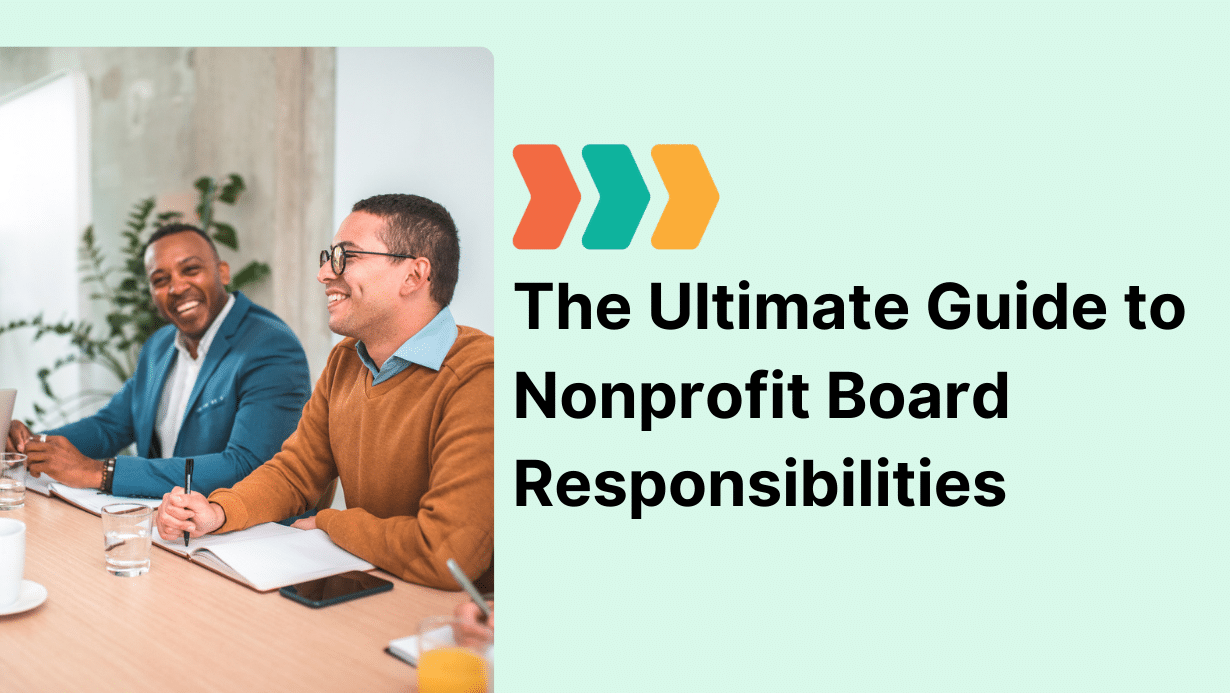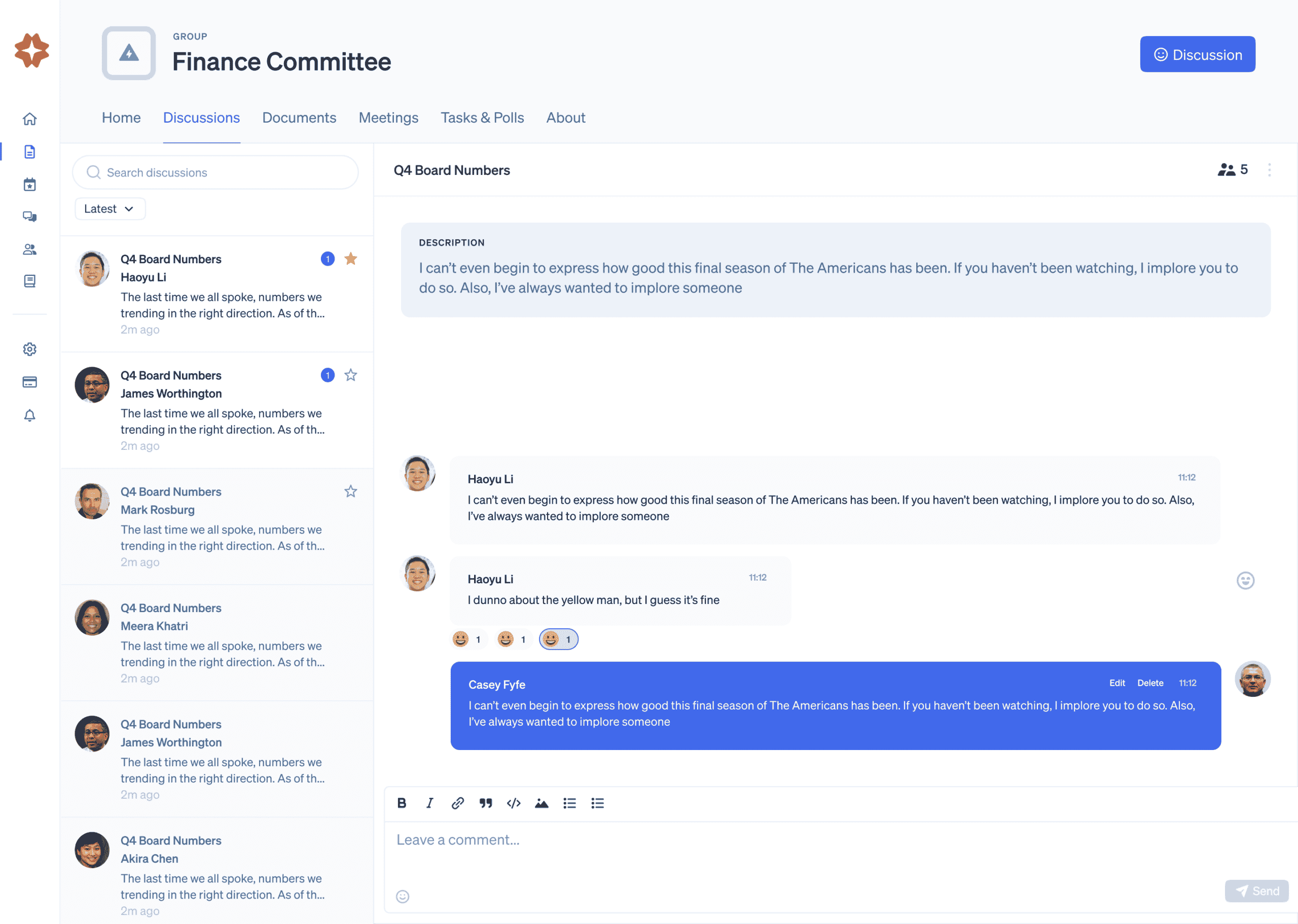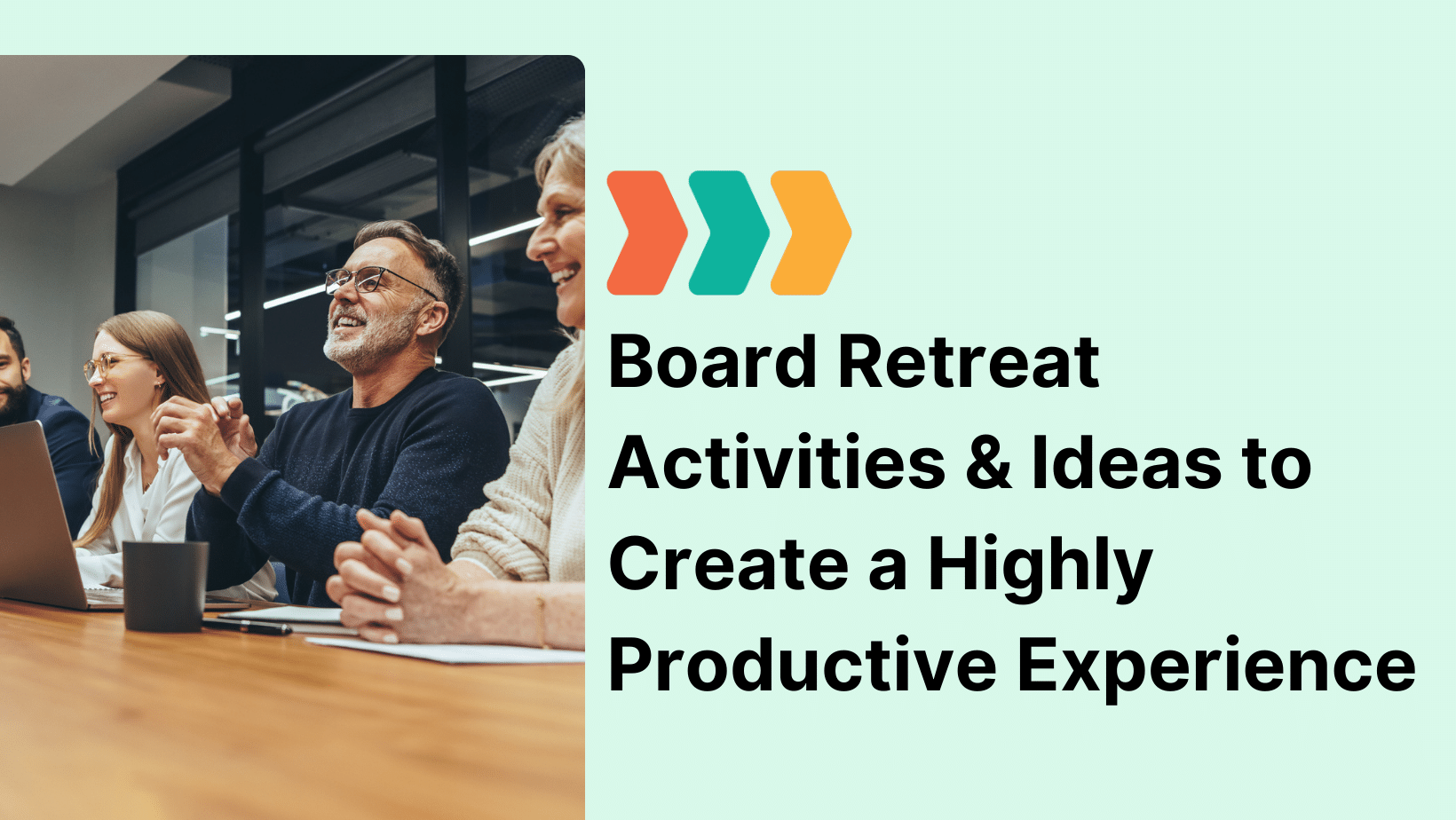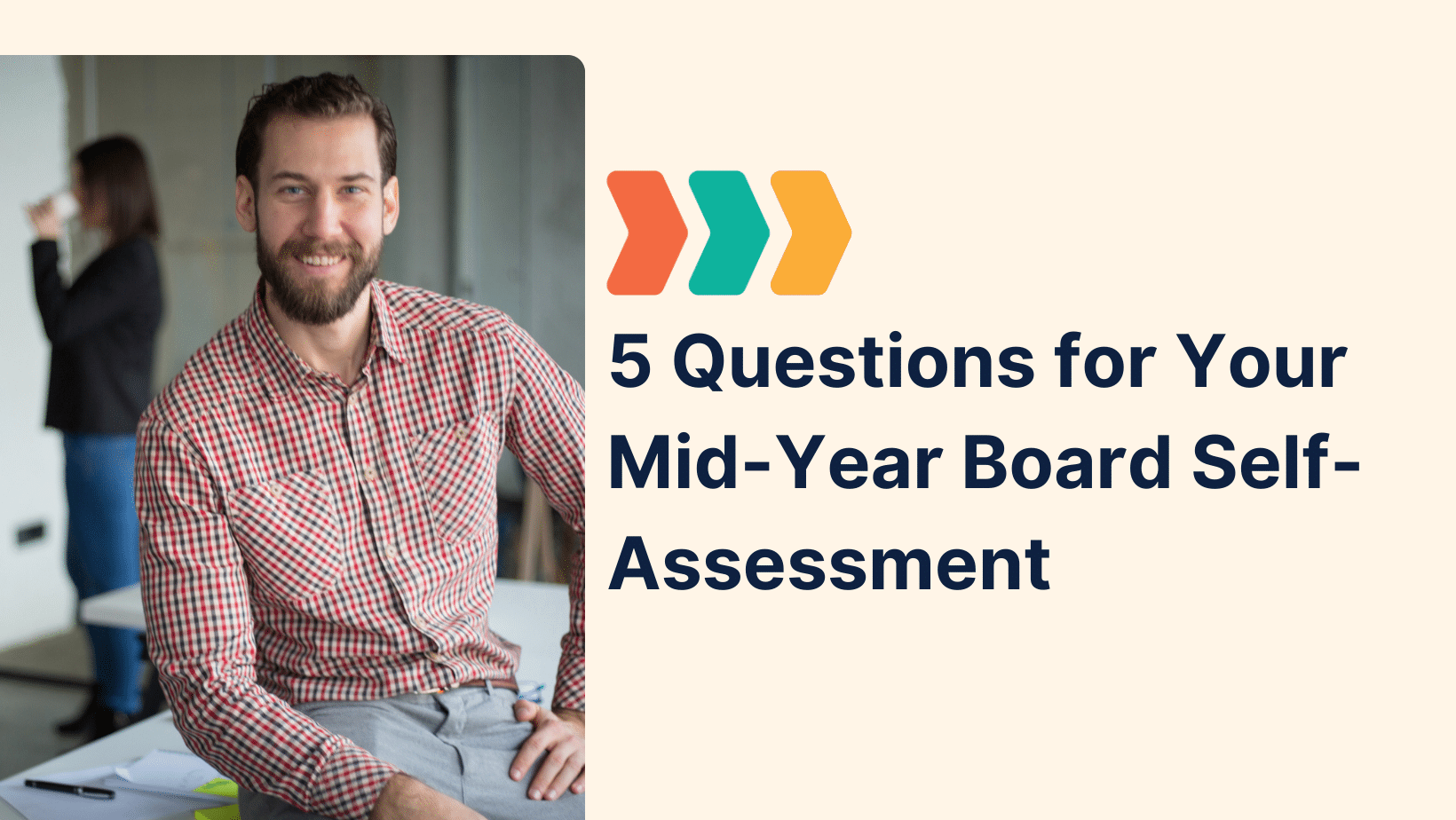So, you’ve joined a nonprofit board—congrats! You’re stepping into a role that has real impact and real responsibility.
But if this is your first time serving, you might be wondering: What exactly are my nonprofit board responsibilities? Or if you’re the board chair, how do I lead effectively while staying aligned with best practices? How often are you supposed to show up for meetings or vote on important matters? What the heck are Robert’s Rules of Order?
Whether you’re completely new to nonprofit governance or just need a refresher on the essentials, this guide breaks down the core responsibilities of a nonprofit board in a way that’s easy to understand — no jargon, no judgment. From attending meetings and understanding your fiduciary duties to supporting your executive director and fundraising efforts, we’ve got you covered.
What is a Nonprofit Board Responsible For?
At its core, a nonprofit’s board of directors is responsible for ensuring that the organization fulfills its mission in a legally compliant, fiscally sound and ethically guided way. But that umbrella includes quite a bit — from overseeing strategic plans and evaluating leadership to approving budgets and making key decisions on behalf of the organization.
A healthy board supports the executive director, sets policy, raises awareness (and often funds, too!), and helps guide long-term planning. While individual nonprofit board member responsibilities may vary slightly depending on the organization’s size and structure, every board is responsible for providing oversight, accountability and strategic direction.
The Three Legal Duties of Every Board Member
There are three fiduciary responsibilities that every member needs to understand. These are known as the legal duties, and they form the foundation of your role.
1. Duty of Care
This means paying attention. Board members are expected to participate actively—attend meetings, review reports, ask questions and make informed decisions. You don’t have to be an expert in everything, but you do have to act responsibly, just as you would if it were your own household or business.
2. Duty of Loyalty
When you serve on a nonprofit board, your decisions should always prioritize the organization’s mission—not personal interests. That includes avoiding conflicts of interest and being transparent if one arises. Your role is to advance the organization, not yourself or any related business.
3. Duty of Obedience
This one sounds intense, but it just means honoring the organization’s mission and staying compliant with laws, regulations and the nonprofit’s bylaws. Board members shouldn’t steer the organization away from its stated purpose.
Together, these duties help protect the organization—and you—while keeping everyone aligned with the broader purpose.
Key Responsibilities of a Nonprofit Board
Beyond the legal duties, there are core functional responsibilities that help a nonprofit thrive. These don’t fall on one person’s shoulders, but are usually shared by the full board with leadership from the board chair and coordination with the executive director.
Here’s a breakdown of the major responsibilities of a nonprofit board:
1. Governance and Oversight
The board helps establish organizational policies, ensures legal and ethical integrity, and oversees the nonprofit’s programs. Governance isn’t about micromanaging day-to-day operations, but it is about holding the organization accountable to its mission.
2. Financial Stewardship
The board reviews and approves budgets, monitors financial statements, and ensures that the nonprofit is making smart, sustainable choices. This is where fiduciary duty becomes very real — you’re safeguarding resources on behalf of your community.
3. Strategic Planning
Setting long-term goals and aligning strategy with the organization’s mission is a major part of board work. This often happens through retreats, planning sessions, or annual goal-setting processes.
4. Executive Director Support and Evaluation
Hiring, supporting and evaluating the executive director (or CEO) is a core board duty. A good relationship between the board chair and executive director is key to a well-functioning organization.
5. Fundraising and Advocacy
Not every board member has to be a major donor, but most boards expect personal giving at a level that’s meaningful to each member. Many also ask members to help raise funds or open doors to donors, corporate sponsors or foundations.
6. Recruiting and Training New Board Members
A strong board doesn’t happen by accident. One of your jobs is to recruit new board members who bring the right mix of skills, experience and perspectives — and help bring them on board once they join.
Board Meetings: What to Expect and How to Prepare
A typical nonprofit board meeting is held monthly or quarterly and follows a structured agenda. You’ll review updates from the executive director, vote on key decisions, hear from committees and discuss ongoing issues.
Here’s how to make the most of your time:
- Show up prepared: Read your meeting materials in advance so you’re not playing catch-up during the meeting.
- Engage: Ask thoughtful questions, participate in discussions and offer your insights.
- Follow through: If you volunteer for a task or vote on a decision, make sure you’re ready to do what you said you would.
The board chair and executive director usually work together to set the agenda and guide the meeting. Some boards use Robert’s Rules of Order to maintain structure, while others are more casual — but either way, clarity and efficiency are the goal.
Avoiding Common Pitfalls
Serving on a nonprofit board is meaningful work, but it comes with real responsibilities. To say effective and out of hot water, avoid these common missteps:
- Missing meetings regularly. You can’t make sound decisions on behalf of the organization if you’re never in the room.
- Overstepping boundaries. The board governs, but it doesn’t manage daily operations. Leave that to the executive director and their team.
- Failing to disclose conflicts of interest. Always be transparent and recuse yourself when appropriate.
- Staying passive. Your insights, experience and networks are valuable! Don’t just warm a seat — roll up your sleeves and contribute.
For Board Chairs: Leading the Board with Purpose
If you’re stepping into the board chair role, your job is to guide the full board, facilitate productive meetings, serve as a liaison with the executive director, and help drive strategy forward. A good board chair is organized, diplomatic, and committed to building a strong team around the table.
You don’t have to do everything, but you do help set the tone.
What It Really Means to Serve
To serve on a nonprofit board is to step into a role of both privilege and responsibility. You’re part of a team that steers the organization in the direction of its mission — and your leadership makes a difference.
When each member understands their responsibilities and commits to the role with purpose, the board becomes a powerful force for good.
So, whether you’re sitting down for your first board meeting or helping recruit new board members for the future, you now have a clear roadmap. And remember: It’s OK to ask questions, learn as you go and bring your whole self to the table. That’s exactly what strong board members do.
Want more practical tips on managing your board meetings, tracking progress, and increasing engagement? Boardable was built to make it all easier. Schedule a demo today to learn more.




